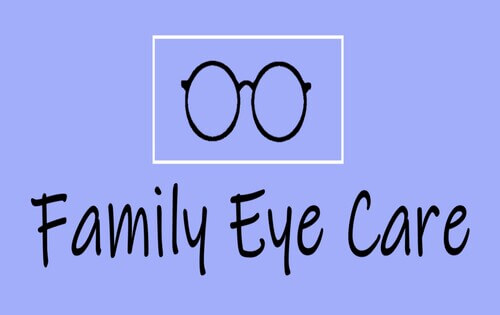Discover Andalusia's Best Cardiologist Clinics and Services
Discover Andalusia's Best Cardiologist Clinics and Services
Blog Article
The Advantages And Disadvantages of Different Refractive Surgeries for Enhanced Eyecare

LASIK Surgical Procedure
LASIK surgical treatment is a generally performed refractive procedure that intends to deal with vision problems such as nearsightedness, farsightedness, and astigmatism. This surgical technique has gotten appeal because of its effectiveness in providing people with clearer vision and decreasing their dependency on glasses or contact lenses. During the treatment, a thin flap is created on the cornea, and a laser is utilized to reshape the underlying tissue, fixing the refractive mistake. The flap is then repositioned, enabling fast recovery and minimal pain for the person.
Among the main advantages of LASIK surgical procedure is the rapid renovation in vision experienced by several clients. A lot of people notice a substantial enhancement in their sight quickly after the treatment, with marginal downtime needed for recovery. Additionally, LASIK is known for its high success rate and low incidence of issues when performed by skilled specialists. Nonetheless, like any operation, LASIK also lugs some dangers, consisting of dry eyes, glow, halos, and under or overcorrection of vision. It is important for people thinking about LASIK surgery to go through a detailed examination by an eye treatment specialist to figure out if they appropriate candidates for the procedure.
PRK Procedure
The PRK treatment, also known as Photorefractive Keratectomy, is a kind of refractive surgery that aims to deal with vision issues similar to LASIK surgical treatment. Unlike LASIK, which entails creating a flap in the cornea, PRK works on the surface area layer of the cornea. Throughout the PRK treatment, the external layer of the cornea, called the epithelium, is removed to permit improving of the underlying corneal cells with an excimer laser. This reshaping assists to correct refractive errors such as farsightedness, astigmatism, and nearsightedness.
Among the benefits of PRK over LASIK is that it removes the risk of flap-related difficulties given that no flap is produced during the surgical procedure. This can be valuable for people with slim corneas or those associated with contact sports where eye injury is a possibility. The recovery time for PRK is commonly much longer compared to LASIK, as the external layer of the cornea needs time to regenerate after the procedure. Regardless of the longer healing period, PRK can be an appropriate choice for individuals looking for vision improvement surgery.
SMILE Surgical Procedure
An innovative refractive surgical treatment strategy getting appeal in the area official website of ophthalmology is SMILE Surgical procedure. Small Cut Lenticule Extraction (SMILE) is a minimally invasive procedure that corrects vision by reshaping the cornea using a femtosecond laser. Unlike conventional LASIK surgery, SMILE Surgical treatment includes developing a tiny cut in the cornea to remove a lenticule, which leads to much less disturbance to the corneal structure and potentially faster recuperation times.
One of the primary benefits of SMILE Surgical procedure is its capacity to treat nearsightedness (nearsightedness) and astigmatism with high precision, leading to outstanding visual outcomes for people. The minimally intrusive nature of the treatment also minimizes the risk of problems such as completely dry eye syndrome, making it a desirable choice for people looking for refractive surgical procedure.

LASEK Technique
Having discovered the benefits and factors to consider of SMILE Surgery, another noteworthy refractive surgical treatment method worth analyzing is the LASEK Strategy. LASEK, which means Laser-Assisted Subepithelial Keratectomy, is a type of laser eye surgical treatment that aims to remedy refractive errors such as nearsightedness (nearsightedness), hyperopia (farsightedness), and astigmatism.
Unlike LASIK, LASEK does not entail creating a corneal flap. Rather, throughout a LASEK treatment, the specialist utilizes a diluted alcohol option to loosen up the thin outer layer of the cornea, called the epithelium. This layer is then delicately relocated aside to allow the laser to improve the underlying corneal cells. When the cornea has been improved to the preferred degree, the epithelial layer is repositioned.
One of the primary advantages of LASEK is that it can be ideal for individuals with slim corneas who may not be good candidates for LASIK. In addition, LASEK generally leads to very little post-operative discomfort and a quicker recovery time compared to PRK. The visual recovery process with LASEK may be a little longer visit than with LASIK.
Implantable Contact Lenses
Implantable Get in touch with Lenses use a lasting vision modification option for individuals looking for an option to typical contact lenses or glasses. These lenses, likewise called phakic intraocular lenses, are operatively inserted into the eye to correct refractive mistakes such as nearsightedness (nearsightedness), hyperopia (farsightedness), and astigmatism. eye center andalusia. Unlike traditional contact lenses that rest on the surface area of the eye, implantable call lenses work within the eye itself, giving clear vision without the demand for everyday upkeep or removal
Among the vital advantages of implantable contact lenses is their durability. When put, they can continue to be in the eye indefinitely, using constant and steady vision correction. In addition, these lenses can be an exceptional alternative for people who are not good candidates for laser eye surgery or who like a reversible vision correction treatment.
Nevertheless, implantable contact lenses do carry some risks, consisting of the potential for cataracts or boosted eye pressure. It is crucial for people considering this option to seek advice from an eye treatment expert to figure out if implantable contact lenses are the ideal choice for their certain requirements and eye health.
Final Thought
To conclude, each kind of refractive surgical treatment has its very own benefits and drawbacks. LASIK surgical treatment is popular for its fast recovery time, while PRK treatment may appropriate for individuals with slim corneas. SMILE surgical treatment offers minimal discomfort during the treatment, however LASEK method may have a longer healing procedure. Implantable call lenses supply an alternative for those who are not suitable prospects for traditional surgical procedures. Individuals must consult with their eye care provider to identify the finest alternative for their individual demands.

On The Whole, SMILE Surgical procedure offers a promising option for individuals looking to improve their vision with refractive surgery.
Report this page